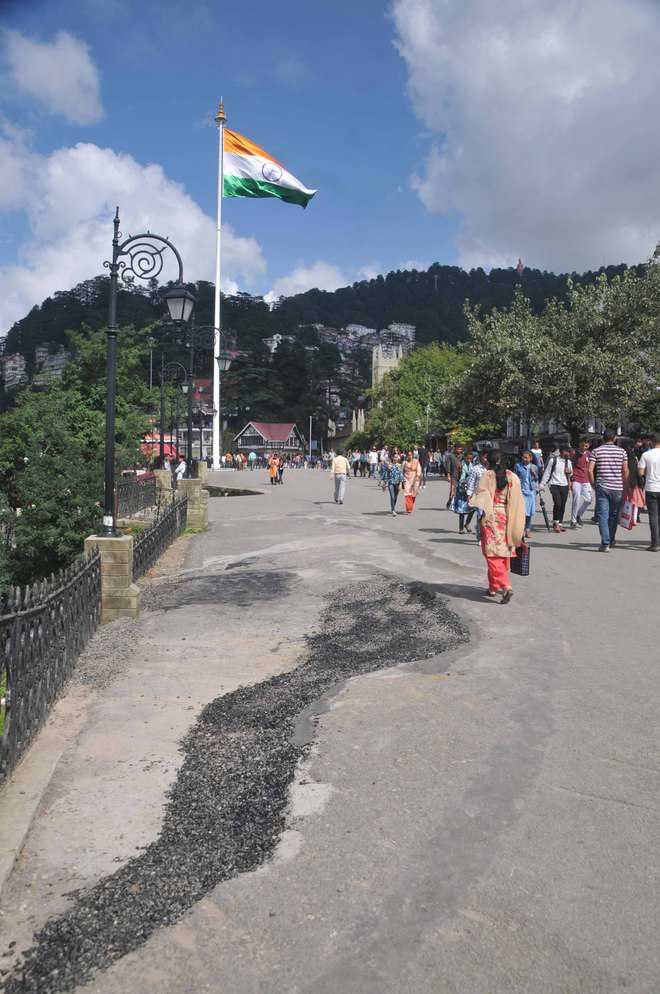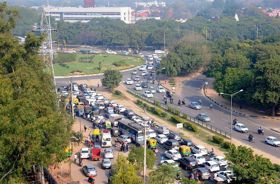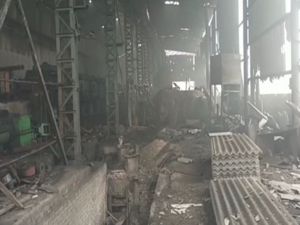
The spot where cracks appeared on The Ridge in Shimla. Amit Kanwar
Kuldeep Chauhan
Tribune News Service
Shimla, August 23
The blocked natural drains and loose soil strata dumped on the northern slope of the iconic Ridge here over 100 years ago are responsible for the cracks that have re-appeared due to the recent spell of heavy rain, observed geologists and engineers.
“The sinking northern portion of The Ridge can be stabilised by raising a proper structure and maintaining the drainage system,” said Puneet Guleria, state geologist. These cracks are on the surface. He said Chief Minister Jai Ram Thakur had been informed about the reasons for the cracks when he inspected the spot 10 days ago. “The drains were blocked. The seepage of rain water going down the loose soil led to the sinking of the portion. The report of the geological study conducted in 2008 had been submitted to the SMC,” he added.
Also in 2015, IIT-Roorkee conducted a study which also found that the hard rock on The Ridge was lying at the depth of 4 m to 9 m depending upon the amount of debris and loose strata dumped on the northern slopes many years ago, said Sanjay Chauhan, former mayor.
The study also found that the water storage tanks under the surface of The Ridge were intact, but a big crack was also found on the starting point of The Ridge on northern side as well, Chauhan said.
The rallies and big gatherings on this portion, where storage tanks are located, should have been forbidden, he lamented.
“We had mulled a Rs 30-crore Ridge stabilisation plan that included a stable structure and green park on this portion, but the state government rejected the plan for reasons best known to it,” Chauhan said. The geological wing carried out the study in 2008 after the big cracks developed. “We carried out a drilling operation and found that the hard rock lay at 5.6 m depth,” Guleria said.


























